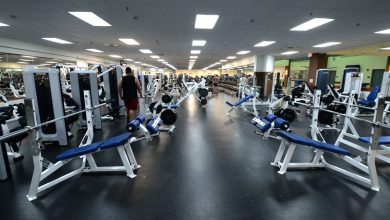These scientific secrets are hidden behind pranayama

Be it religion and customs or age-old yoga practices, science is associated with all this somewhere. This also applies to Pranayama, an integral part of Yoga. Science is also associated with doing Pranayama. So today let us inform you about the scientific secret behind Pranayama.
Blueprint of the respiratory system:
Actually, our respiratory system starts from the nostrils and extends to the air sacs. When we breathe through the nose, it reaches the windpipe (trachea) through the larynx and pharynx. And then in the chest below the neck, it first divides into two parts right-left and then like the branches and branches of the tree, dividing more than fifteen times to form the respiratory tree. Even the respiratory tree is called the air-conducting zone. Its last branch, which is called the terminal bronchiole, also divides 5 to 6 times and its last branch opens into fifteen to twenty alveoli. The alveoli look somewhat like bunches of grapes. The part from the terminal bronchioles to the alveoli plays a major role in completing the respiratory function. This is called the respiratory zone.
Along with all the branches and branches of this tree of the respiratory tract, there are also blood vessels carrying and carrying blood. The pulmonary artery carries impure blood from the heart to the lungs and the purified blood in the alveoli reaches the heart again through the pulmonary vein through small veins. In normal breathing (title respiration), only 20 percent of the lung has to be reduced. The rest of the parts remain inactive and naturally the flow of blood in these inactive parts is also very slow. If a person does not exercise daily, the air sacs do not get enough fresh air and better blood flow. This is the reason that when we climb stairs or a small mountain or run, our breath becomes very short. This is because crores of sluggish air sacs are unable to function.
What happens when you do Pranayama?
When we do pranayama, the diaphragm goes down to seven centimeters, and the muscles of the ribs are also more active and do more work. In this way, more air can enter the lungs and 100% of the alveoli get plenty of fresh air. In addition, the blood flow also increases. Similarly, the heart sitting between the two lungs is pressed from all sides, as a result, it also has to work more. Due to this fast flow of blood, those cells are also filled with sufficient blood circulation, vitality, and nutrients, which had to remain idle in normal conditions.
And if you are a fitness freak and want to learn more about yoga poses, you can join the Yoga School in Rishikesh.
By doing Pranayama, all the organs of the abdomen including the lungs start functioning properly. Chemicals are released in proper quantity from the glands, and foreign matter gets out, due to the fast flow, bacteria become weak, getting enough food, and vitality increases the strength of cells to fight diseases, and new blood is formed in the bone marrow. . The stool accumulated in the intestines starts coming out. Eating and drinking start feeling the body, as a result, the power of memory, thinking-understanding, and analysis increases. Patience and prudence increase. On the whole, the definition of a healthy person given in Ayurveda is realized in life, ‘Prasannatmendriyamana Swasthya Ityabhidhayate’ i.e. health is a happy state of body, senses, mind, and soul.




